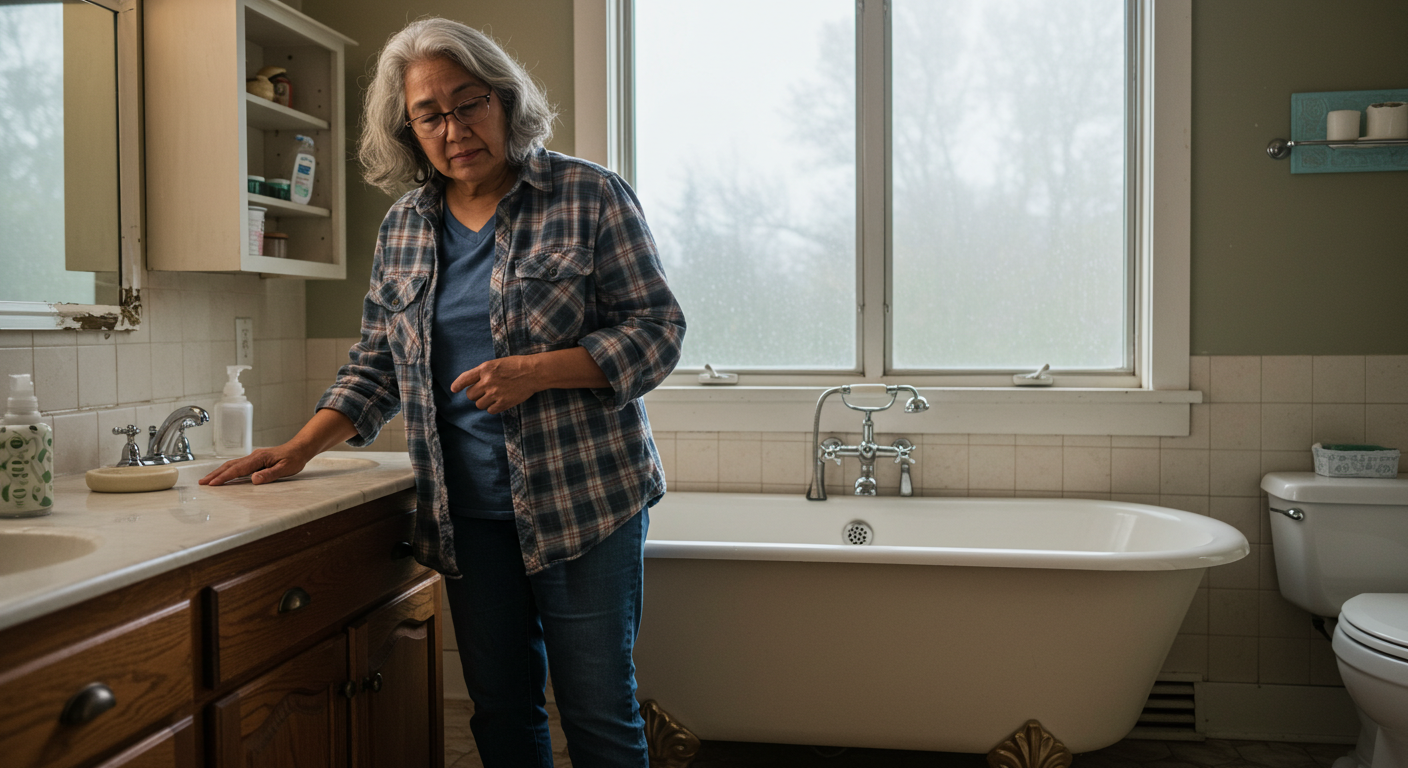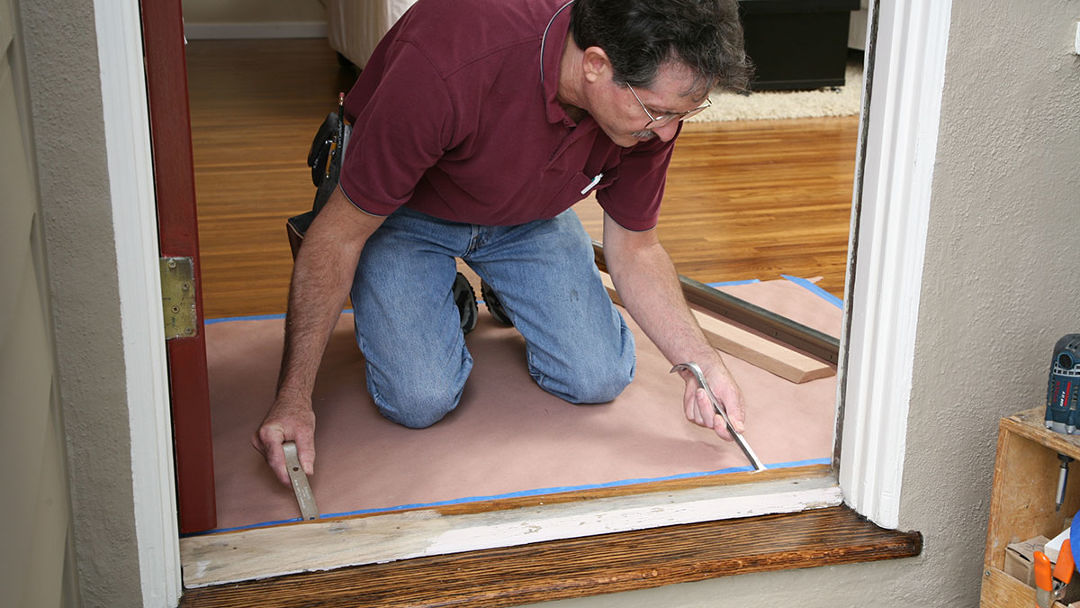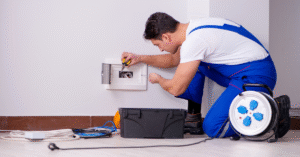
“Home is not a place, it’s a feeling.”
This sentiment captures why 90% of adults over 65 want to stay right where they are, in their current home as they age.
When considering aging in place, Portland homeowners face unique considerations due to our climate, terrain, and housing styles.
This desire to “age in place” is completely understandable—our homes hold memories, provide comfort, and connect us to communities we value. Especially in our area, where we have so many distinctive neighborhoods and unique micro-cultures, staying in the place you know best and the place that has supported you in the past is a healthy, soul-affirming wish.
But here’s an eye-opening statistic: according to the U.S. Census Bureau, only 10% of American homes are actually “aging-ready.” This gap between desire and reality raises an important question that many older Portland homeowners are facing: Is aging-in-place actually the best choice for your situation?
At Silver Compass Property Group, we believe this decision deserves careful, informed consideration. While our comprehensive Aging in Place guide covers the topic broadly, this article will help you determine if your home is generally suitable for aging-in-place before you consider investing in modifications.
Let’s explore what you need to know to make this important decision with confidence.
The Current Reality: What the Numbers Tell Us
Understanding the broader context of aging in place can help frame your personal decision. Here’s what current data from the U.S. Census Bureau and other reliable sources tells us:
- Nearly 90% of adults over 65 want to remain in their current homes as they grow older
- The 85 and older population is projected to increase from 6.7 million in 2020 to 14.4 million in 2040
- Only 10% of American homes are considered “aging ready”
- 39% of homes with two or more floors do not have an entry-level bathroom
- 76% of remodelers say they’ve received more requests for aging-in-place-related features over the past five years
Where are most older adults living now? According to the Joint Center for Housing Studies of Harvard University, the vast majority live in their own homes:
- 25,218,000 live with spouse only in their own home
- 14,362,000 live alone in their own home
- 9,223,000 live with family in their own home
- 913,000 live with nonrelatives only
- 4,772,000 live in home of family
- 1,410,000 live in group quarters (such as skilled nursing facilities)

This data confirms that aging in place is already the norm rather than the exception. However, the low percentage of “aging ready” homes suggests many may need modifications to make them suitable for comfort, safety, and independence in the long-term.
What Portland Homeowners Should Know About Aging in Place
Before deciding if aging in place is right for you, it’s important to evaluate your current home’s suitability. The following room-by-room assessment can help you identify potential challenges. These basic guidelines are developed by architects, builders, certified aging-in-place specialists (CAPS), and occupational therapists who intimately understand the day-to-day needs of older homeowners and how their home environment can best support them.
Overall Home Considerations
- Are doorways at least 36 inches wide (to accommodate walkers or wheelchairs)?
- Do you have lever-style door handles instead of knobs?
- Are light switches accessible from both ends of rooms and hallways?
- Do all staircases have secure handrails?
- Are doorway thresholds level with the floor?
- Do throw rugs have non-slip backing, or could they be tripping hazards?
- Is there a turning space (5-by-5 feet) in each room for a wheelchair?
- Is lighting bright and adequate throughout the home?
Entryway Assessment
- Are there stairs to the entry? If so, do they have handrails?
- Is there enough space for a potential entry ramp?
- Is the foyer flooring slip-resistant?
- Would an entry bench be beneficial for putting on or removing shoes?
Bathroom Evaluation
- Are there grab bars near the toilet, bath, and shower?
- Is the toilet seat 17-19 inches high for easier transfers?
- Does the shower or tub have anti-slip coating?
- Is there a handheld shower head option?
- Does the bathroom door open outward to maximize space?
- Is there a shower chair or bench available?
Kitchen Considerations
- Are the stove controls easily accessible and do they alert you if left on?
- Is the sink and counter height appropriate (standard is 36 inches)?
- Do base cabinets have roll-out trays for easier access?
- Are frequently used items within easy reach?
- Is there adequate lighting, including under-cabinet lighting?
Bedroom Review
- Does the bed height (20-23 inches from mattress top to floor) allow for easy transfers?
- Is there a light switch near the bed?
- Is there adequate clearance for a walker or wheelchair around the bed?
- Can a phone be easily reached from the bed?
- Is there enough lighting in closets and storage areas?
The more “no” answers you have to these questions, the more modifications your home would need to support aging in place comfortably and safely. According to research from the National Association of Home Builders, the most common aging-in-place modifications include:
- Grab bars (93% of projects)
- Curbless showers (83%)
- Higher toilets (77%)
- Widened doorways (63%)
- Added lighting/task lighting (49%)

Aging in Place Portland: Home Value Considerations
When weighing whether to invest precious financial resources to modify your current home or move to a more suitable one, it’s worth considering how aging-in-place modifications might affect your home’s value.
According to Bankrate, these modifications can actually improve home value, not just with other seniors but with the general home-buying public, when it comes time to eventually sell.
- Full bathroom on main level
- Doorways at least three feet wide
- Hallways at least four feet wide
- Non-slip floor surfaces
- Entrances without steps
- Lever door handles (instead of knobs)
- Hands-free faucets
- Pull-out drawers (rather than standard cabinets)
- Automated light shades
- Smart lighting system with LED bulbs and rocker light switches

However, some aging in place modifications may potentially decrease a home’s resale value. If future resale value is an important consideration, think carefully about these installations:
- Elevator (56% of respondents to a National Association of Home Builders survey did not want this feature)
- In-law suite (42% of NAHB respondents did not want this feature)
- Permanent exterior ramps
- Chair or wheelchair glides on stairs
- Large grab bars
- Push bars on doors (instead of handles)
- Walk-in bathtubs
It’s important to note that even with features that could increase home value overall, the cost of making that change could outweigh the benefit. For example, widening a hallway may add value, but if one of the walls is load-bearing, it could cost $20,000 to $50,000 or more to change. In the long run, that amount of money may go much further if it’s invested in a different home in the same community that is already “aging ready” or could be made aging ready at lower cost.
This is exactly why having a face-to-face conversation with a Certified Aging In Place Specialist and a walk through of your current home is so valuable. The ideas and suggestions you can get from an expert are well worth a small consultation fee. And that fee is often credited to you later if you decide to work with that specialist on making modifications.
Next Steps: Making Your Decision
After assessing your home’s current state and considering potential modifications, you’re in a better position to decide if aging in place is right for you. Here are some next steps to consider:
- Prioritize modifications: If you’re leaning toward staying, create a list of essential “must-have” modifications versus those that would be “nice to have”.
- Consider costs vs. benefits: Weigh the expense of needed modifications against the cost of moving to a more “aging ready” home elsewhere.
- Consult with professionals: A professional home assessment can provide more detailed insights about your specific property. At Silver Compass we include CAPS, builders, handymen, and other key home modification specialists in our trusted network and can connect you for consultations easily.
- Think about your support network: Consider your proximity to family, friends, and healthcare facilities.
- Explore all options: Remember that aging-in-place isn’t an all-or-nothing decision. Some choose to stay in their homes during active retirement years and plan for a later move when life circumstances make a move to another home the best option.
Resources to Help You Decide
Making this important decision deserves time and thoughtful consideration. We’ve created resources to help you navigate this process:
Download our free Aging in Place Guide for detailed modification options and implementation strategies to make your home work better for you.
Ready to discuss your specific situation? Schedule a free, no-pressure consultation to explore all your housing options with a Senior Real Estate Specialist.
Whatever you decide, remember that the right choice is the one that best supports your unique needs, preferences, and circumstances.
Thanks for reading : )
Peter Lindberg
Lead Broker – Silver Compass Property Group
Senior Real Estate Specialist
503-806-4277






